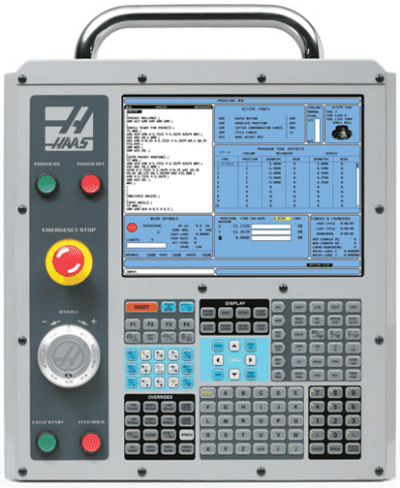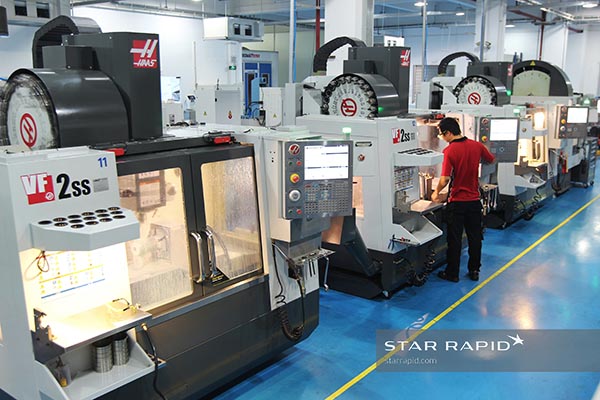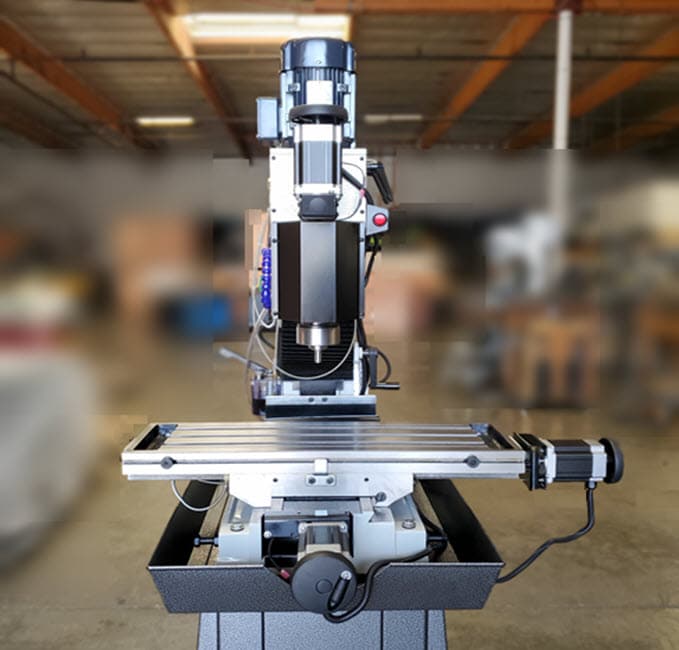Are you in the manufacturing industry and looking to learn how to program a Haas CNC mill? Look no further! This guide will walk you through the steps to program your Haas mill with ease.
Programming a Haas mill can seem daunting at first, but with the right tools and knowledge, it can be a simple and efficient process. Whether you’re a beginner or an experienced operator, this guide will provide you with the necessary steps to create precise and accurate parts with your Haas CNC mill. So, let’s get started and dive into the world of Haas mill programming!
- Start by turning on the machine and selecting the program mode.
- Load the program into the machine’s memory using a USB drive or Ethernet connection.
- Select the appropriate tool, speed, and feed rate for the job.
- Use G-code or M-code to specify the machine’s movements and actions.
- Test the program using a simulation mode to ensure it runs correctly.
- Finally, load the material onto the machine and begin the milling process.
Programming a Haas CNC Mill: A Comprehensive Guide
Understanding the Basics of Haas CNC Mill Programming
Programming a Haas CNC Mill can seem like a daunting task, but once you understand the basics, it becomes much simpler. The first step in programming a Haas CNC Mill is to understand the different types of commands that are used. There are two main types of commands: G-codes and M-codes.
G-codes are used to control the movement of the machine, while M-codes are used to control auxiliary functions, such as turning on or off coolant or spindle rotation. Some common G-codes used in Haas CNC Mill programming include G00, which moves the machine to a specific location, and G01, which moves the machine in a straight line at a specific speed.
Once you understand the basics of G-codes and M-codes, you can start to write your own programs for the Haas CNC Mill.
Creating a Haas CNC Mill Program
When creating a program for a Haas CNC Mill, it is important to break the program down into smaller sections. Each section should contain a specific set of commands that will be executed by the machine. This makes it easier to troubleshoot any problems that may arise during the machining process.
One of the most important things to consider when creating a program for a Haas CNC Mill is the cutting speed. The cutting speed will determine how fast the machine moves through the material being machined. It is important to find the right balance between speed and accuracy to ensure the best results.
To create a program for a Haas CNC Mill, you will need to use a programming language called G-code. This language is used to write the commands that control the movement of the machine. There are many different software programs available that can be used to write G-code, including CAM software and text editors.
Setting Up the Haas CNC Mill
Before you can start programming a Haas CNC Mill, you will need to set up the machine. This involves configuring the machine to operate at the correct speed and accuracy, as well as setting up the cutting tools that will be used.
One of the most important things to consider when setting up a Haas CNC Mill is the tool offset. The tool offset is used to ensure that the machine is cutting the material at the correct depth. If the tool offset is not set correctly, the machine may cut too deep or not deep enough, resulting in a poor-quality finished product.
Another important factor to consider when setting up a Haas CNC Mill is the workholding. Workholding refers to the way in which the material being machined is held in place on the machine. There are many different types of workholding devices available, including vises, clamps, and chucks.
Benefits of Programming a Haas CNC Mill
Programming a Haas CNC Mill offers many benefits, including increased accuracy and efficiency. By using a computer to control the movement of the machine, it is possible to achieve much greater precision than would be possible with a manual machine.
In addition, programming a Haas CNC Mill allows for greater flexibility in the machining process. It is possible to create complex shapes and designs that would be difficult or impossible to achieve with a manual machine.
Another benefit of programming a Haas CNC Mill is that it can help to reduce manufacturing costs. By automating the machining process, it is possible to produce parts more quickly and with less waste, resulting in lower production costs.
Haas CNC Mill vs. Manual Milling
While programming a Haas CNC Mill offers many benefits, it is important to consider the differences between a CNC Mill and a manual milling machine. One of the main differences is the level of skill required to operate the machine.
A manual milling machine requires a high level of skill and experience to operate effectively. In contrast, a Haas CNC Mill can be operated by someone with little or no experience, as long as they have the necessary training and knowledge.
Another difference between a Haas CNC Mill and a manual milling machine is the level of precision that can be achieved. While a manual machine can produce accurate results, it is difficult to achieve the same level of accuracy as a CNC machine.
Overall, programming a Haas CNC Mill offers many benefits over manual milling, including increased accuracy, efficiency, and flexibility. However, it is important to consider the differences between the two types of machines when deciding which one is right for your needs.
Frequently Asked Questions
Here are some frequently asked questions about programming a Haas CNC mill.
What is a Haas CNC mill?
A Haas CNC mill is a computer-controlled machine tool used to shape metal, wood, or other materials. It uses a rotating cutting tool to remove material from a workpiece and create a finished part. The Haas CNC mill is a popular choice among machinists due to its accuracy, reliability, and ease of use.
To program a Haas CNC mill, you will need to use specialized software called G-code. This software allows you to input precise instructions for the machine to follow, such as tool paths, cutting speeds, and feed rates. Once you have created your program, you can upload it to the machine and watch as it automatically creates your part.
What are some basic programming concepts for a Haas CNC mill?
Some basic programming concepts for a Haas CNC mill include understanding the XYZ coordinate system, tool offsets, and work offsets. The XYZ coordinate system is used to locate the position of the cutting tool in relation to the workpiece. Tool offsets are used to compensate for variations in tool diameter or length, while work offsets are used to compensate for variations in the position or size of the workpiece.
Other important concepts to understand include spindle speed and feed rate. Spindle speed refers to the rotational speed of the cutting tool, while feed rate refers to the speed at which the cutting tool moves through the workpiece. By adjusting these parameters, you can achieve different cutting speeds and finishes for your parts.
What are some common programming errors to avoid when using a Haas CNC mill?
Common programming errors to avoid when using a Haas CNC mill include typos in the G-code, incorrect tool or work offsets, and incorrect spindle speeds or feed rates. It is important to carefully review your program before uploading it to the machine, and to double-check all of your inputs to ensure that they are correct.
Other common mistakes include forgetting to zero out the machine’s position before starting a new program, and failing to properly secure the workpiece to the machine table. These errors can result in damaged parts or a malfunctioning machine, so it is important to take your time and follow proper procedures when programming a Haas CNC mill.
What are some tips for successfully programming a Haas CNC mill?
Some tips for successfully programming a Haas CNC mill include taking the time to properly set up your machine and workpiece, carefully reviewing your program before uploading it to the machine, and testing your program on a scrap piece of material before running it on your final part.
It is also helpful to have a good understanding of the machine’s capabilities and limitations, and to take advantage of the many resources available for learning about Haas CNC milling, such as online tutorials and user forums. By following best practices and continually improving your skills, you can become a successful Haas CNC mill programmer and produce high-quality parts for a variety of applications.
In conclusion, programming a Haas CNC Mill can be a challenging task, but with the right tools and knowledge, it can also be an exciting and rewarding experience. By understanding the basics of programming and familiarizing yourself with the Haas control system, you’ll be able to create precise and intricate parts with ease.
Remember, practice makes perfect, so don’t be afraid to experiment and try new techniques. Take advantage of resources such as online tutorials, forums, and user manuals to expand your knowledge and expertise.
Ultimately, programming a Haas CNC Mill requires patience, dedication, and a willingness to learn. But with these qualities, you’ll be well on your way to mastering this powerful tool and creating high-quality parts for a wide range of applications.
Request a quote today!
[contact-form-7 id="1578" title="Contact form"]
Please compress the file into a ZIP or RAR file before uploading. Alternatively, send through your RFQ by email.
enquires@unitymanufacture.com





